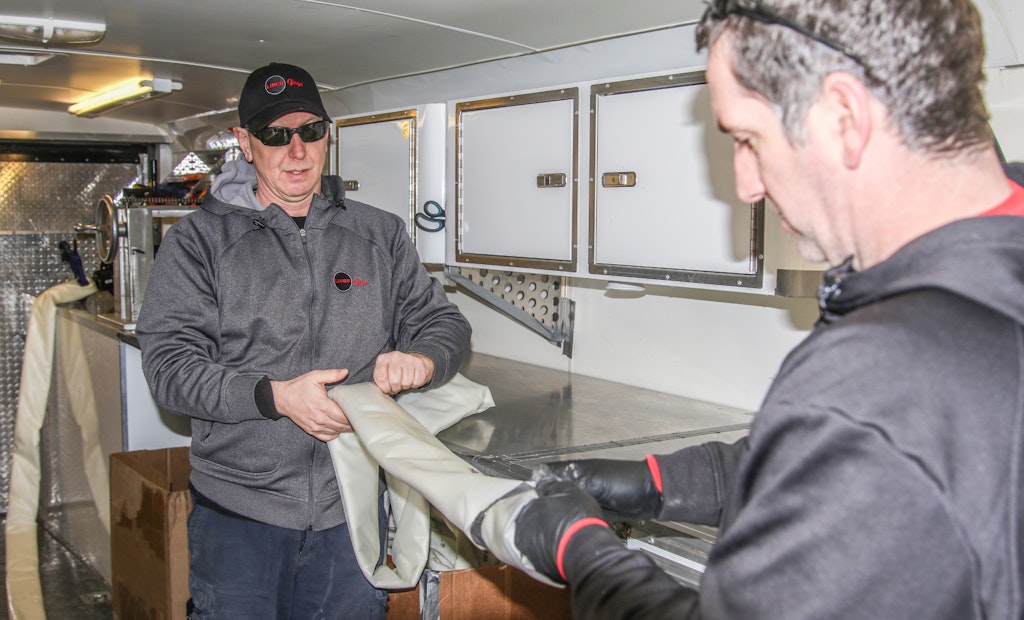
On-the-job practice is a valuable learning tool in many situations. But with lateral lining, practice in the shop prior to taking on an actual job might be the better approach.
Interested in Relining/Rehab?
Get Relining/Rehab articles, news and videos right in your inbox! Sign up now.
Relining/Rehab + Get Alerts“Our crew recently attended a lateral lining training class, and we finally went out on our first job. What a disaster. Needless to say, we didn’t get the liner in the ground and wasted 75 feet of liner, a calibration tube, 60 pounds of resin, as well as two guys’ wages for the day. I feel like forgetting about lining and just sticking with what I know. I’ve been cabling and jetting lines for 10 years and never had this kind of trouble.”
I’ve run a cable machine as well as a jetter, and I can tell you my first experiences with both were not pulling up to a job site with a few hours of instruction and completing a drain cleaning job efficiently. In fact, cabling and jetting took way more practice than I thought was necessary before I started. Can a person open a line with very little instruction? Yes. Can he or she do it safely? No. Can he or she perform the job so the line is cleaned the best that it can be cleaned? No.
How many times have you gotten a call from a homeowner who got a chunk of cable from The Home Depot, took it home, and got a toilet opened up only to have it plugged up worse a few days later? If you’ve never received any calls like that, you’re either brand new to the business or lying.
As a drain cleaning professional, your training probably involved your boss taking you with him on several drain calls and instructing you for many weeks or months before allowing you to go on your own. Even then, you may have called him when you ran up against something you’d never experienced before. You were under no gun regarding time or additional tooling to get the job completed, and if it took all day to get done, that was just part of the learning process. I’ll bet when you look back at some of those first jobs you did by yourself, you wonder how it could have taken you all day to jet 50 feet of a 4-inch line from the house clean-out. That was your learning period. Time you could take because there was no “under the gun” timer hanging over your head.
If you take that same approach with lateral lining, however, you’ll fail. The one caveat to this process is that once you mix chemicals together, you have a clock telling you to get your liner in the ground before it cooks off. With that clock as a motivator, you have to change your training methods. Lateral lining training can’t take place in the field for a new crew. It has to be done in an environment where you can repeat the steps over and over until, like walking, they become natural. It takes practice to get good at anything. Each activity you do requires practice, but some types of practice can be done in the field while others require a controlled environment.
Here’s an example: Most children learn to talk by the time they are 2 or 3 years old. In fact, most are pretty proficient at it, but virtually none of them can read or write. If you can read or write, my bet is that you learned those skills in a controlled environment like a classroom and practiced it over and over until you were able to do it.
Lateral lining is no different. It’s more like reading and writing than learning to talk. You need to practice the process over and over in a controlled environment to be proficient. I would say lateral lining is much easier than drain cleaning. Both skills are learned; they are just learned differently. With lining, learning in the shop will ensure success in the field because of one component — the clock.
About the Author
John Heisler is the owner of Pipe Lining Supply and Quik-Lining Systems Inc. He has 20 years of experience in the CIPP lining industry and more than 40 years in the underground construction industry.





